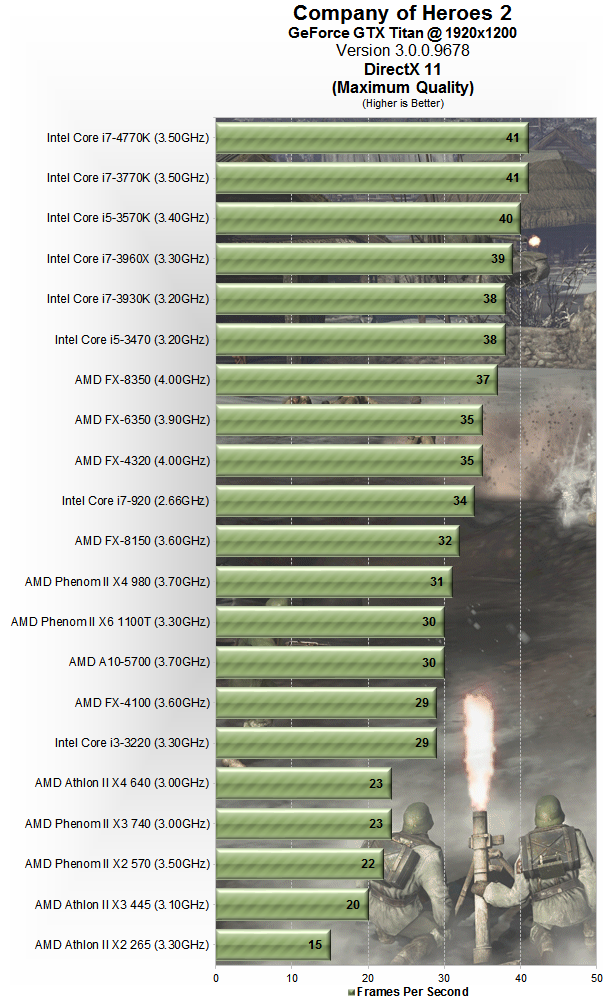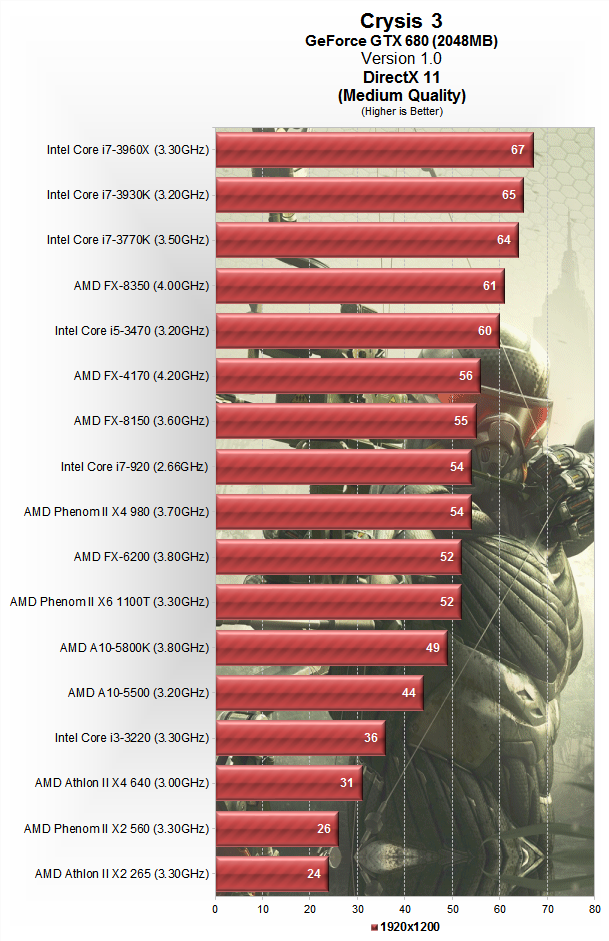GOM3RPLY3R
Honorable
noob2222 :
juanrga :
gamerk316 :
CoH2 is a WELL threaded game. Runs 9 main threads according to the devs, and on my PC, I confirmed that last night via GPUView. The game is very well threaded.
That simply highlights the point I've been trying to make for over two years now: More threading != More performance.
Nope. It is not well-threaded because above benchmarks show how a i5 (4 threads) gives more FPS than six core i7 (12 threads). In a well-threaded game the 12 threads i7 would be faster than any other chip there including the (8-threads) FX-8350.
I am only guessing that the engine overloads one or more cores and leaves partially loaded (probably under 60% load) the rest of cores, generating a CPU bottleneck. This could explain why a $250 four core chip outperforms a $1000 six core chip.
That game is neither representative of well-threaded games, neither of future games.
the game is designed around latency and cores.


2.5 ghz 4770 is faster than a 3.2 ghz 3930k so the theory of clock speed fails.
Moreover, the game seems quite CPU dependent, as we saw a 42% performance increase when going from 2.50GHz to 4.50GHz, though that is an 80% jump in clock speed.
so clock speed is mostly ineffective wich means ipc is the same.
this isn't a case of "ipc is the only thing that matters" Intel have lower memory and pci-e latency.
According to Relic Company of Heroes 2’s large memory footprint made the latency of transferring data between GPUs untenable. This in turn meant that an alternate frame rendering solution (like Crossfire or SLI) may not produce a higher frame rate as the GPUs would be bottle-necked by the latency of PCI-E bus.
from the s/a article on coh2.
http://www.anandtech.com/show/5091/intel-core-i7-3960x-sandy-bridge-e-review-keeping-the-high-end-alive/4
sb-e has a higher latency than the 1155 cpus. explains its place below IB.
this game warrants some memory speed testing to see how it reacts.
well threaded or just latency dependent?

the interesting one is still the I3 ... even with its low latency, it can't keep up with any quad core cpu aside from the athlon x4
Dual core gaming is going to die.
I'm sorry, but I just have to say, something is definitely manually forged by the Company of Heroes benchmarks, or the information isn't correctly given. I see people with max settings, 1080p and 1200p with 680s and i5-3570ks STOCK, that are pulling more than that. There's no possible way that a game can have that perfect frame rate from a boost of 2 Ghz. Check your results and try again buddy.
EDIT: On the contrary, I completely agree that dual core gaming is realistically dead. My friend was using an Athlon Dual Core @ 3.0 and on 18WoS: ALH, max settings he was getting ~30 FPS with a 6750. Then he put it in a computer with a Quad Core i3-530 @2.9 Ghz, and he was instantly getting ~80-100 frames.
Also with ArmA 2, he went from getting 30 frames on Low (No AA, ASF, or PostProcess), to ~60 Frames on High (No AA, but ASF @ Normal, and PostProcess @ Low)



